
There Cannot be a Healthy Body Without a Mind Filled With Sacred Thoughts
Bangalore, SSSIHL-BRN (Summer Course )
Description
Mind is responsible for both bondage and liberation. We must entertain only those thoughts that are deserving. That is why in Yoga there are two aspects - Yama and Niyama. Yama refers to the control of the inner and outer senses. That’s not all, you have to ensure only the good is acquired. Such regulations go with it (yoga). Therefore, yoga is completely based upon sankalpas (thoughts). So we must transform them to good sankalpas. What type of sankalpas? Thoughts of the Divine alone are eternal and pure.
Topics
-Yoga
-

The Essence of Patanjali Yoga is Unity in Thought, Word and Deed
00:03:57To some, the worldly appears to be good. For how long? It is only temporary. This is called happiness (santhosham). What is the meaning? Some...thosham – it's a fractional happiness or a gift. You feel hungry, you go to the canteen; you ate two chapatis; hunger is appeased but for how long? It is only for two hours. In the third hour, again you feel hungry. Therefore that which confers temporary happiness is called Sukham. But that which confers divine happiness (Daivanandam) is called Bliss (Anandam). Just enquire the difference between happiness and bliss. This bliss comes out of the heart; happiness comes out of the head. Head carries the responsibility; but heart has right. For every man, head and heart are important. Think good; you then reflect upon it. Then put it into action with hands what you thought. Therefore, the heart, head and hand together assume the '3H' form. In Patanjali Yoga it is said that we should exercise control over the senses and also achieve unity of the senses. Unity...unity...unity... That's why it is said – the proper study of mankind is man. What is this mankind? It's the harmony of three - heart, word and action. Therefore, out of this unity we will develop purity; through purity we will step into Divinity. The moment we step into Divinity, the enmity will be set away. Therefore the Patanjali Yoga sutra confers the Divinity. So, to the extent possible, the young students - boys and girls, in times of anger or difficulties, they should be able to tolerate and forbear, face it boldly and earn the patience to move forward. In the beginning stage, you may find it a bit difficult. As you practice, gradually it becomes a habit. Walking, talking, reading, writing, eating... everything comes out of practice. Everything is accomplished only by practice which brought us to this level. Do just-born babies start run immediately? No. First the child gets up, crawls, stands up, falls, again gets up and eventually starts walking. Therefore, we have to develop such practices gradually. Therefore, this yoga is not meant only for rishis, yogis and renunciants but it is essential for every human being with the body.
-

Yoga is Not Complete Without Pranayama
00:04:32It is not merely sufficient to practice yogasanas. One must also follow certain regulations. When observed with proper discipline we will receive the full benefit. All practice of Yoga is based on discipline. Yoga is not merely a physical exercise. Pranayama and Pratyahara have to go along with it. Pranayama is the process of inhaling and exhaling air. There are three steps, namely: Purakam, Rechakam and Kumbhakam. Purakam is inhalation, Rechakam is exhalation and Kumbhakam is the retention of the inhaled breath. How should this be performed? One should not attempt to do Pranayama reading from books, without the guidance of a guru. It is very dangerous. We can keep a timer and note the time we take to inhale. You can do it for a duration that is comfortable to you, there is no strict rule that inhalation should take a certain duration. But the breath has to be retained for the same duration you took to inhale. And the same time taken for retention should be taken for exhalation. These three processes should take equal intervals of time. Watch... (Swami demonstrates)! You should not gasp or become breathless, it should be natural. This has to be practiced, and with time you have to take breath through one nostril alone and exhale through the other. It is referred to as Ida, Pingala and Sushumna. The air taken in goes through the nerves Ida and Pingala, and in between is retained in the Sushumna. When there is any mistake in this process, the lungs get damaged. Not only this, even the brain gets affected to an extent. This is a very subtle process, but when practiced correctly we will experience no strain, no matter how much work we do. Some people after running pant like a dog! This is not right. However much one runs, after coming to a halt, the breathing should be even. This is possible through the practice of yoga alone.
-
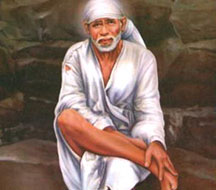
Mere Practice of Asana Cannot be Called Yoga
00:04:14Patanjali dedicated his life for the sake of yoga. Not only this. He propagated that human life is based upon health and that without health it cannot exist; that for all activities body is most essential and for the body discipline is most essential. And that the most important role of yoga is to impart this discipline. Na Sreyo Niyamam Vina - There can be no welfare without discipline. There are some rules and disciplines for yoga too. Eating within limits and eating healthy is also essential. Food must also be tasty. But taste should not be all important either. We should also know the sacredness of the material. But man today is not taking into account these two factors. Eating whatever comes his way, man is completely ruining his health. Food is for the sustenance of the body and clothes are for protection from the cold. Food is for the maintenance of the body and not for your taste. Hunger is a disease, food is the medicine; thirst is a disease and water is the medicine. We want that this medicine should be very tasty. We should never give consideration to the taste when it comes to medicine. Relief from disease should alone be the goal. Similarly, today we give much importance to the taste of what we eat. We fail to recognise the true value of the food. Nowadays, foreigners following discipline in eating, have reduced eating spicy, salty and sour foods. The goal of Patanjali yoga is complete health and complete peace. As we are not able to practice such yoga these days, nerves become weak and the rate of blood circulation rises, causing more agitations in us. The reason for such agitations is essentially blood pressure. And this blood pressure is cause due to absence of rest. And this lack of rest is caused due to lack of sleep. Today, wherever you see in the world man is facing many agitations.
-

It is a Pity that Yoga is Not Valued as Much in the Land of Its Birth
00:03:11Yashoda brought up Lord Krishna has her own child, earned the name that she is Krishna’s mother and rejoiced. But mother Devaki was despondent and thoughtful. One day she was thinking thus sitting under a tree: It was not for me to see the wondrous deed of Your sucking away the life of Putana while she suckled You; It was not for me to kiss Your wondrous belly, which ropes failed to bind; It was given to me to suffer the labour pains to deliver You to the world; It was given to Yashoda to fondle You in fond joy: Though fertile, I became a barren women. Without begetting a son, Yashoda became the mother of a Great Son. The Bharatheeyas of today have to lament in the same way. Though India is the mother of Yoga Sutras and Shad Darshanas, it is the foreigners who foster Yoga in their countries and derive immense benefit thereby. The Indians are reduced to the pitiable condition of learning Yoga in foreign lands. This must be considered a misfortune of the Bharatheeyas. Though all the mysterious, unique, powerful and sacred concepts have arisen from Bharath, you don’t make the effort to foster, protect or experience them.
-
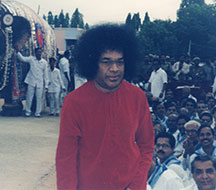
Yoga Can Bring Benefits Way Deeper Than Just Physical Health
00:03:00It was also investigated in a different way in old Mexico. There in old Mexico, they had jailed many people. Among these people living in the prison, restlessness and sickness was on the rise. Doctors investigated as to what could be the reason behind this, whether it was the food or water. They then came to the conclusion that restlessness of the mind is the cause. Recently, they have started the practice of Yoga in this prison in old Mexico. And in a matter of two months time, the people in this prison began regaining their health. Not merely health they were also happier and more cheerful. They developed keen interest on spending all the time in the practice of Yoga. As they were practicing Yoga, many of the students gave up consuming drugs and intoxicants too. The students also began showing aversion towards cigarettes. Having had such experiences, students themselves started teaching other students about the benefits of Yoga. That is how around three to four lakh students practice Yoga everyday in foreign countries now. They have come to have faith that the practice of Yoga can confer many benefits. It is in Bharath, that the practices of Patanjali Yoga started, but the foreigners enjoy the practice of it. The reason for this is that Bharatheeyas lack the faith and devotion in it.
-

Increasing Number of Researchers are Converging on the Medical Benefits of Yoga
00:02:47In an international university in America, a physiology professor experimented in different ways. He was firm and determined to find the results, and so kept his focus on research. He is Carlton Cane. Just recently he arrived at the results. He discovered and concluded that, through Patanjali Yoga anything could be changed. Later, some other researchers conducted experiments at the university in Hawaii and recognised this truth too. Colleat, Sheaton and Johnson were the researchers and they conducted experiments in diversified ways. Among the three professors Johnson was quite astute. He didn’t have any inclination or faith in Yogasana, but after the research results, he understood the misconception he developed towards Yoga. It is said in Patanjali Yoga Sutra, ‘Chitta Vritti nirodhakaha’. When the vagaries of the mind are controlled one can accomplish anything in life, one can improve one’s mental and physical abilities - this was also a conclusion they arrived at. They publicised that yoga is a must if one wishes to maintain good health without spending a penny and without going to doctors.
-
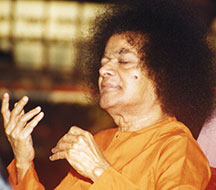
Yoga is the Best Solution for Problems Caused by Modern Lifestyle
00:03:29In this age of technology, in order to maintain the burdensome family life and to bring more prosperity, man struggles day and night and exerts himself. Because of this exertion he becomes tired and loses sleep; and for sleep he takes sleeping pills or intoxicants and thereby spoils his health. Investigators began wondering why this happens and what is the solution to this problem. They eventually concluded that yoga is the solution to these ailments. Having lost mental peace and physical health because of the exertions in the world, following all perversities, ceaseless pining, limitless desires and entertaining meaningless anxieties he is working for the money he doesn’t deserve. He neglects the body and the mind to maintain his family and loses everything. People started searching for the way out of this. And as a result of this continuous investigation they could arrive at the right solution. On account of too much exertion man’s body is weakened. Due to the high rate of inhalation and exhalation, even the lungs are damaged. Since blood is circulating at a high speed, high blood pressure develops. For these diseases there seems to be no cure even if one takes the right medicines. Therefore, the investigators declared that Yoga alone is the only solution for peace, prosperity and happiness.
-

Yoga is For All
00:03:41Ancient saints from time immemorial have practiced, experienced and taught this special art of yoga. This is an aspect of the ashtanga (eight-fold) yoga. Yama, Niyama, Asana, Pranayama, Pratyahara, Dharana, Dhyana and Samadhi are the names by which they are known. Bharatheeyas didn’t put the right efforts to know the significance of these aspects. Though Bharath was the birthplace for Yoga, it was developed abroad. Either because of progressive education or because of the effects of modern civilization, the blind faith is on the rise among Bharatheeyas. If man wishes to know about anything he must investigate with all sincerity and faith. Without sincerity and due enquiry the truth will not reveal itself. Bharatheeyas neglected this science of yoga thinking that it is meant for the ochre-clad ascetics and sages, living in the forest and consuming fruits and roots. They had misgiving that yoga is not meant for the regular householders and ordinary folks, that it is for renunciants who spend time in solitude. But this is not true. The researchers today have proven and propagate that yoga is indeed essential for ordinary people too.
-

What is true Yoga?
00:01:00What is ‘Yoga’? There are many kinds of ‘Yoga’ in the world today. According to Patanjali Yoga sutras Yoga is defined as “Yogaha chitta vruttinirodhakaha” meaning Yoga is to have total control over one’s senses. Yoga means to have all the powers in a human under his control. Having total control is called as Yoga. Exercising control over what one hears is Yoga; control over smell is Yoga; controlling one’s speech is Yoga; control over one’s thoughts is Yoga- therefore Yoga is having control over the five senses.
-

What is Kriya Yoga according to Bhagawan
00:00:54All that is outside is the reflection of the inner being. They are the reflections of the inner being. Hence one must first and foremost check all that which comes from within. This is called as “Indriya Nigraha”, control of senses. This is also called as “kriya yoga”. What is kriya yoga? Yoga means exercising control over the bad actions, bad feelings and bad thoughts. Sacred, permanent and true divine thoughts and good thoughts emerge when one controls the bad thoughts and actions.
-
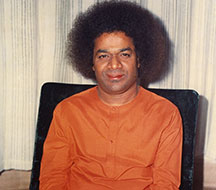
Unwavering mind is a pre-requisite to attain Samadhi
00:03:00In order to understand and reach the state of Samadhi, the fourth line of the verse: ‘Kuruavadaanam mahadavadhaanam’, tells one to do ‘avadhaanam’ or concentration, ‘mahadavadhaanam’ great concentration. One must not be in haste or be impatient or have wavering mind to attain the state of Samadhi. One must remember that to attain the state of Samadhi one should possess an unwavering mind, good surroundings, concentration and should avoid haste. A plant does not bear fruit the moment it is planted. It takes time to bear fruit. Likewise crop planted takes time before it can be harvested. Unfortunately the seekers today want the fruit soon after planting the tree; want the harvest as soon as they plant the seeds. So without giving into the greed of attaining Samadhi right away and without giving room to hurry and haste, the seeker must have the qualities of peacefulness, patience and pleasant heart before he can attain the state of Samadhi. Shankara in the fourth line of the verse: ‘Kuruavadaanam mahadavadhaanam’ says that concentration, peacefulness, patience and pleasant state of mind are the prerequisites in a seeker to attain Samadhi.
-

What is Samadhi State
00:09:00Students!! The word Samadhi is understood in many different ways in the world. Some consider falling down unconscious in a swoon, uttering excitedly the words related to spiritual thoughts while in a swoon or behaving in a confused and inconsistent manner, as Samadhi. To be unconscious or to be in a subconscious state or to be in a super-conscious state is not being in Samadhi. The word Samadhi connotes the state in which one is in his natural form and yet experiences and enjoys bliss. Such a state is quite possible and is the real Samadhi. Anything else, like the unconscious state or the subconscious or the super-conscious state refers to either hysteria or emotion or fits or to some other disease but can never be called ‘Samadhi’. Unfortunately, Indians today are not able to recognise the true Samadhi from these various diseases and hence are not able to hand over to others the sacred meaning of Samadhi. The words Samadhi, Pranayama, Prathyahara, japa or the tapa have all to be interpreted properly and given due respect. One must take to the path of truth to understand the sacred Samadhi. The words referring to various things have their meaning. In fact the meaning attached to the word comes from the object that the word points to. So ‘Sama dhi’ must itself contain and indicate its true meaning. “Sama” means equal and “dhi” means buddhi or mind. When one develops equanimity or equal-mindedness, one is, truly, in a state of Samadhi. It is possible to develop such a state even in mundane life provided one understands and experiences the meaning of Pranayama and Prathyahara. One can certainly develop the state of Samadhi in the ordinary world, while being quite normal, without being emotional. When the mind is turned inwards, it concentrates only on the atma and not on the world outside. The mind discards the nature and its attributes and is solely focused on the atma. In that state joy and sorrow, troubles and tribulations, heat and cold lose their difference and significance. One is beyond the dualism and does not recognise the disparities. One realises the oneness in all. An individual in the state of Samadhi remains aloof of the world although he lives in it; he might seem to be a part of the society but he is not affected by it. The mind of such a person always concentrates on the ‘Atma drishti’ or the in-sight. He is beyond the society though in the society. To illustrate the above one can take the example of a type of bug which though living in the mud is not affected by it. Another example would be the black kohl that is worn by women to highlight their eyes, which does not touch the iris. Yet another example is the tongue which tastes various oily substances but never gets greasy itself though the hands may get greasy. The tongue is untouched by the grease. The lotus flower is untouched by the water which sustains it and in which it blooms. Like the lotus, like the tongue, like the bug in the mud, like the irises of kohl laden eyes of women, a man in Samadhi too is untouched by his surroundings.
-
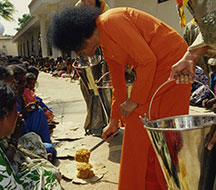
How do we get to Samadhi state
00:03:28The third line of the verse refers to the state of samadhi. To attain Samadhi one has to follow certain paths. By practicing both Pranayama and Prathyahara, one can put a check to the sense organs and give up the worldly desires and turn the mind inwards towards the atma. All the energies latent in the body take a different turn. The state of samadhi should not be attained in the darkness of ignorance or foolishness. ‘Jaapyasametha samadhi vidhaanam’ Samadhi must go along with japa, penance. ‘Japa’ does not merely mean turning of the beads on the rosary but it is the contemplation of God at all times. Japa is continual repetition of name of the Lord whether done loudly or not but done atleast in the mind. This contemplation and chanting the lord’s name in the mind is called as ‘Japa’. ‘Japa’ contemplating the lord’s name inwardly and ‘bhaja’ contemplating the lord’s name outwardly mean one and the same and one should not differentiate them. The state of the mind turned inward, thus contemplating on the lord is the samadhi with japa.
-
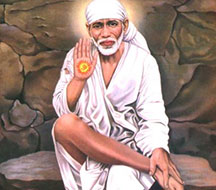
Pranayama and Prathyahara
00:07:55Embodiments of the divine atma! Young boys and girls!! The path of spirituality can be compared to the game of fire and to the combat with a ferocious tiger! If one is not alert one can be dragged by Maya (illusion) into the web of worldly affairs. Maya makes all efforts to engulf man in the illusionary world and to forget the human qualities. Therefore before man embarks on the path of spirituality it is essential to have the knowledge of ‘Pranayamam’and ‘Prathyaharam’. Sadhana or the practices in the path of spirituality are of two types namely ‘inner Sadhana’ and ‘outer Sadhana’. The practices of sravanam (listening), mananam (reminiscence), keertanam (singing), smaranam (contemplation), paadasevanam (service), chintanam (brooding), archanam (worshipping), daasyam (servitude), sneham (friendship), aatma nivedanam (surrendering), are all proof of the outer Sadhanas. ‘Pranayamam’ and ‘Prathyaharam’ are the two inner Sadhanas. Pranayamam refers to the practice of controlling one’s ‘prana’ or breath. There are five types of prana in man viz., ‘prana’, ‘apana’, ‘vyaana’, ‘udaana’ and ‘samana’. The significance of ‘Pranayamam’ lies in the recognition of these five vital breaths or prana, controlling them and thereby developing the inner vision. This ‘Pranayamam’, has three sections namely ‘rechaka’ exhaling, ‘pooraka’ inhaling and ‘kumbhaka’ holding breath. These three sections describe how the vital breaths of prana and apana are controlled and how they are held in the process that is described as ‘kumbhaka’. The second practice is called as ‘Prathyahara’. It refers to controlling the mind through the senses. When the mind through the sense organs perceives the worldly objects; it gets sullied with sensuous desires and develops attachment leading to bondage. The meaning of Prathyahara lies in the efforts put in to turn the outward vision of the mind inwards towards the atma. Some spiritual aspirants guided by misinformed and ignorant gurus indulge either in the practice of praanayama only or only in Prathyahara and spend their time. One cannot practice Pranayamam without Prathyahara and vice versa. Therefore both the practices, namely Pranayamam and Prathyahara are like the twins; like the image and its reflection. One cannot reap the results of such practices by following only one of them.
-

What is the path of Karma yoga
00:00:53Discipline is the essence of Karma Yoga. It is Karma Yoga that allows one to attain proficiency in action. Man is expected to be the master of action, and that is what you should strive to achieve. What is good action? Good action is that which is in accord with God’s command. It is only when one performs daily duties in a disciplined manner that one becomes eligible to be called vidyavantulu or educated. What is the meaning of the word ‘Vid?’ It means wisdom. Discipline and good action form the pathway to wisdom.
-

Swami on Kundalini and Yoga practices
00:03:49There are 33 rings in the spinal column, and located between the 9th and 12th rings is the Sushumna nadi or a vital passage. If the sitting posture is erect, Kundalini Shakti or energy of consciousness whose base is at the bottom can flow easily and directly to the top reaching its destination Sahasrara, often described as a lotus with a thousand petals. What exactly does Kundalini Shakti mean? Experts in yogic practices say there is a serpent called Kundalini at Mooladhara or the base at the bottom of the spine. When aroused, this serpent gradually moves to its destination Sahasrara. Many methods are available for awakening the latent power of consciousness, pranayama or meditative breathing exercises being one of them. In this process, air is inhaled, held for some time and then exhaled. During the retention period, breathing action is deliberately suspended as a part of pranayama and there is neither inhaling nor exhaling. This holding of breath stimulates Kundalini to rise and travel to higher regions. There is no serpent but just a stimulation of Kundalini power, triggered by the breath retention process. When stimulated, Kundalini power gradually makes its way upwards through the 33 rings. The spine is held erect in order to facilitate this ascent of the energy of consciousness. This is the reason why yoga practitioners maintain an erect posture; such a posture improves memory power and greatly enhances the ability to concentrate. Sitting erect is thus a part of discipline. To achieve this discipline, certain types of purification are necessary. To start with the body must be kept pure. This does not mean cleaning the body with water and a good soap; rather it means that the body must be prepared by engaging in good actions. When the mind is absorbed in good thoughts, it becomes purified. Good thoughts get translated into good actions which then purify the body. It is through such purity of thought and action that the buddhi or the power of spiritual discrimination gets strengthened.
-
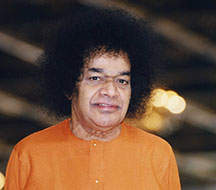
Clear Mind Leads To Societal Service
00:03:00For acquiring success in our attempt to do service to the society, the first step will be for us to acquire success in service to our own household in a limited manner. Before we can solve the problems of our household, we must first attempt to solve the problems of our individual selves. For a man who fills his mind with several problems, it will not be possible for him to do any service to the society. There is no other Yoga and no other sadhana which is better than service to the society. Elders have told us and have defined Yoga as one which consists of controlling one's mind. But, there are not people who have given the correct meaning and interpretation of this sacred word 'Yoga'. To control one's mind is something which is not possible for any individual. From times immemorial, we have been using this word and we have been explaining 'Yoga' as consisting of controlling one's mind, but there has not been an individual whom we know who has put this in practice. It is necessary that you should recognize the meaning that to put your mind along the right path is equivalent to controlling your mind. Man cannot live without some kind of sankalpa or desire. But if you control all thoughts and ideas, life becomes useless. The true meaning of this control is to say that you should channelize your thoughts and ideas and put them in the right direction in such a manner that, they will be of service to your society and environment.
-

Importance of Yoga in realizing Atma
00:03:30One individual, that is the Atma Swaroopa, either in the waking state, or in the deep sleep state or in his Samadhi state is feeling that he is having different names and forms and experiencing different situations. He, in consequence, feels and thinks that he is four different persons. What happens in our daily life is slightly different. In that we do not have four different names for the different roles we play during our life. In effect we are giving importance to the form and the name which we have in one of these four states—the waking state—and we ignore what happens to us in the other three states. Again, to be able to realize that what exists in these four states is one and the same Atma Swarupa, we will have to go through some exercises of the type prescribed as yoga. By yoga, we also get equal-mindedness. By the good deeds done in our previous births, we get the Vishnu Tattwa or the aspect of Vishnu. In order that we may get these two qualities, the aspect of equal mindedness and the aspect of Vishnu, it is necessary that we have to pay heed to the injunctions laid down in the Vedas. We have also to follow the paths that have been prescribed by the Shastras as well as the paths shown to us by the elders. Because we have trained ourselves in seeing only the external world, we have lost our capacity to develop inner vision.
Topics
- Analogies
- Atma
- Attachment
- Balvikas
- Bhaja Govindam
- Bhajans
- Body
- Character
- Company
- Compassion
- Culture
- Day to day
- Desire
- Devotees
- Devotion
- Dharma
- Discipline
- Discrimination
- Doctors
- Education
- Faith
- Festivals
- Forbearance
- Gayathri
- God
- Gratitude
- Guru
- Health and healthcare
- HIS Life
- Human values
- India
- Karma
- Love
- Mahabharata
- Man
- Meditation
- Mind
- Music
- Musicians
- Namasmarana
- Nature
- Parents
- Philosophical concepts
- Pleasure and Pain
- Practice
- Ramayana
- Religion
- Sacrifice
- Sadhana
- Sai Organization
- Saints
- Sathya
- Science
- Senses
- Service
- Sevadal
- Shanthi
- Shirdi Baba
- Society
- Spirituality
- Students
- Thoughts
- Time
- Unity
- Upanishad
- Vedas
- Vices
- Youth
